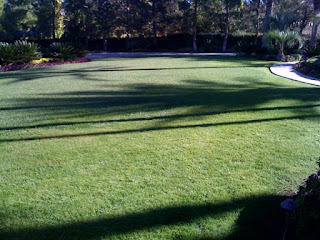Fertigation Systems
What is a Fertigation System?
Fertigation is fertilizing while irrigating. This is done by installing a small fertilizer holding tank and injector onto your sprinkler systems water feed line. Each time the water flows, the water soluble fertilizer is drawn from the tank and injected into the irrigation water to be distributed to your plants thought the sprinkler heads, emitters, and lines every time you water. This slow continuous application of fertilizer is called 'micro-dosing'. It's like a fertilizing IV drip for your plants. Numerous arid Western state university studies have document the effectiveness of applying fertilizer products using fertigation vs. the traditional granular on the soil method. Fertilizer uptake into the plants in arid regions with fertigation can be as high as 90% vs. the much lower absorption levels for traditional fertilizer methods. In Israel, where drip irrigation was pioneered, fertigation systems are essential and common on all irrigation systems on homes to farms. There like here, they get no rain so there is no other method of fertelizing that is as effective as fertigation. Fertigation provides the only reliable way to apply fertilizers physically to the plants root zone.
This house has had a system installed for two years.
What's in the Tank?
The most common product is a 20/20/20 with surfactant (wetting agent) added. This is a similar product to Miracle Grow. Agave also blends an organic sea plant / fish extract product that will increase soil heath and microbial activity. We can also add seasonal insecticides and borer control treatments to the tank for spot placement at trees and shrubs. Nothing compares to the results you will experience from an automatic fertigation system. It is proven as the superior way to fertilize
Another installation after two years.
Why is Fertigation Better then the Regular Fertilizing Method?
The benefits of micro-dosing over soil applied granular are:
Precise year around slow feedingNutrients can be up to 90% available to the roots for uptake
Even product application
Increased plant rooting
Decreases plants water needs
Stronger plants resist disease and insects
Increases beneficial microbes, and improves agronomic conditions in the soil
What Are the Costs of a Fertigation System?
A typical residential home will require a 1.5 gallon tank, with an installed cost of $279.00. An optional plastic 'rock' cover can be added for $45.00. The tank can also be installed in an in-ground sprinkler box. Recharging the fertilizer tank will run abut $20.00 a month for most homes.
COUPON OFFER
Any system installed before January 30th will receive 4 months of free fertilizer recharging.
Before and after photos and more information is available on our web site at www.agavelandscapes.blogspot.com











